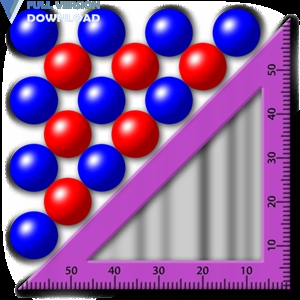CrystalDiffract v6 brings the world of x-ray & neutron powder diffraction to your computer screen with interactive control and easy characterization of your experimental data. CrystalDiffract reads from saved crystal files, to simulate x-ray or neutron powder diffraction patterns on the screen, with easy manipulation and measurement tools. Real-time parameter controls let you experiment with diffraction and sample settings, with instant feedback. Combine these with instant mix creation – and the ability to load observed data in the same window – and you have a powerful workbench application for researchers, teachers and students alike.
Here are some key Features of “CrystalDiffract v6.8.1.” :
- The New Diffraction
CrystalDiffract goes beyond traditional laboratory X-ray diffraction, with the ability to simulate the diffraction from the latest white-radiation energy-dispersive diffraction as well as ultra-high resolution neutron spallation sources (time-of -flight diffraction) Of course, traditional laboratory diffractometer techniques are also covered, and you present your resulles as a diffractometer trace, or a simulated diffraction film. - Simulating Mixtures
CrystalDiffract can simulate diffraction patterns from multi-phase mixtures. You can add new phases to a mixture by simply dragging and dropping files into a diffraction window and then clicking on the Toolbar’s “Mix” button. - You can have virtually unlimited number of components, adjust individual phase proportions in real time, and turn phases “on” or “off” using checkboxes in the Structures List. You can toggle between displaying separate diffraction patterns (perhaps stacked, for greater clarification), and combined in “mix mode.”
- Analyze Experimental Data
CrystalDiffract lets you import multiple experimental (xy) datasets for comparison with simulated data: just drag-and-drop text files into your diffraction window. - You can check your experimental data for impurity phases or other anomalies – or even attempt to identify a unknown phase using a match of observed and calculated data (the List of Structures allows you to quickly scan through the list of ideal phases,
When the observed data has been characterized, the baseline and zero-error corrections can be applied interactively, and a residual graph / film displayed on the screen (along with a calculation of the sum of squares difference). - Plot Control
CrystalDiffract offers extensive plot control. You can select a pattern and choose from a wide range of plot styles. You can specify a precise plot range, or search for specific peaks. Scaling controls are provided for x and y axes, with a Magnify tool and auto-scaling option. You can also adjust the front-to-back ordering of multiple diffraction patterns, and automatically stack or collapse the display. - CrystalDiffract offers high-resolution printing, re-sampling simulated diffraction profiles to match your printer’s resolution. As an alternative to printing, you can export diffraction traces as text files, in xy format, with your chosen x-axis resolution.
- Saving / Exporting Data
CrystalDiffract lets you save your work as a self-contained “session” file for quick and convenient access the next time you use the program. You can also export data files containing structural data, listings of custom-sorted diffraction data, structure factors, or diffraction profiles (for example, for plotting in a spreadsheet or graphing program).
System Requirement
- NET Framework 4.6 or later
- Software Requirements
– Windows 10 (64-bit)
– Windows 8.1 (64 bit)
– Windows 8 (64-bit)
– Windows 7 (64 bit)
Download CrystalDiffract v6.8.1.


